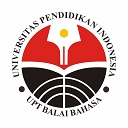CONTRASTIVE ANALYSIS OF EXPRESSIONS ON JAPANESE AND INDONESIAN LOVE LYRICS -BASED ON COGNITIVE LINGUISTIC POINT OF VIEW-
Abstract
Keywords
Full Text:
FULLTEXT PDFReferences
Kovecses, Z. 2010. Metaphor A Practical Introduction, Oxford: Oxford University Press.
Lakkof , George. 2003. Metaphors We Live By, Chicago : The University of Chicago Press.
Mahsun. 2005. Metode Penelitian Bahasa, Jakarta : Rajagrafindo Persada
Purnamawatie, Rizky. 2012. Efektivitas Penggunan Media Lagu Berbahasa Jepang Terhadap Motivasi Belajar Bahasa Jepang Universitas Pendidikan Indonesia. Universitas Pendidikan Indonesia
Sakrie, Denny 2015. 100 Tahun Musik Indonesia. Jakarta: Gagas Media
Solihat, Elin Siti. 2014. Efektivitas Media Lagu wajib Nasional Dalam Pembelajaran Goi (Kosakata) Bahasa Jepang Siswa SMAN 15 Bandung. Universitas Pendidikan Indonesia
Sudaryanto. 1993. Metode dan aneka teknik Analisis bahasa. Yogyakarta: Duta Wacana.
Sutedi, Dedi. 2016. Mengenal Linguistik Kognitif, Bandung : Humaniora
Sutedi, Dedi. 2009. Pengantar Penelitian Bahasa Jepang, Bandung : Humaniora
金本節子 (2006) 、「歌の中色彩表現現代日本の流行歌にみられる日本人の色彩感覚」『コミュニケーション学科論集茨城大学人文学部紀要№19』pp.35-54
鄭基成 (2006) 、「再帰代名詞の換喩、提喩、隠喩についての認知言語学的アプローチ(その1) :換喩、提喩、隠喩の定義をめぐって」『コミュニケーション学科論集茨城大学人文学部紀要№19』pp.1-12
谷口一美(2006)、「学びエクサザイズ認知言語学入門」ひつじ書房
中尾愛美、鍋島弘治朗(2014)、「恋と愛-J-POPの認知メタファー分析-」『英米文学英語学論集-第3号』pp.21-44 関西大学英米文学英語学会
方 小贇 (2014) 、「日本語慣用句の成り立ち:理論的な枠組みと発生のメカニズム」『紀要論文外国文学63号』p.77 -85 宇都宮大学
DOI: https://doi.org/10.17509/japanedu.v3i2.13267
Refbacks
- There are currently no refbacks.
Copyright (c) 2018 JAPANEDU: Jurnal Pendidikan dan Pengajaran Bahasa Jepang

This work is licensed under a Creative Commons Attribution-ShareAlike 4.0 International License.
 Published by:
Published by: Department of Japanese Language Education, Faculty of Language and Literature Education
Universitas Pendidikan Indonesia
 Online ISSN: Online ISSN:2528-5548 |

JAPANEDU: Jurnal Pendidikan dan Pengajaran Bahasa Jepang (e-ISSN:2528-5548) lisenced under a Creative Commons Attribution-ShareAlike 4.0 Internasional (CC BY-SA 4.0)

